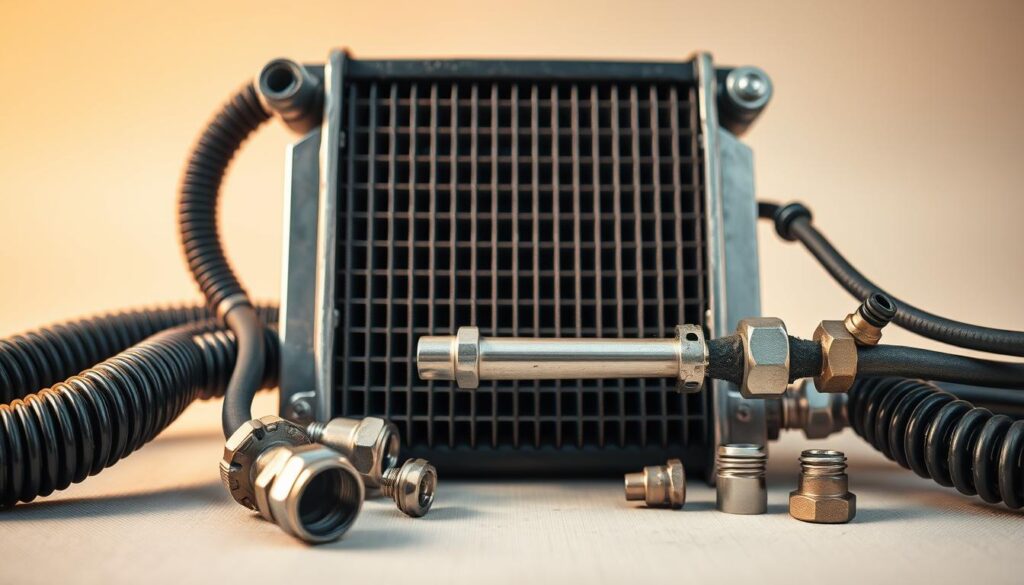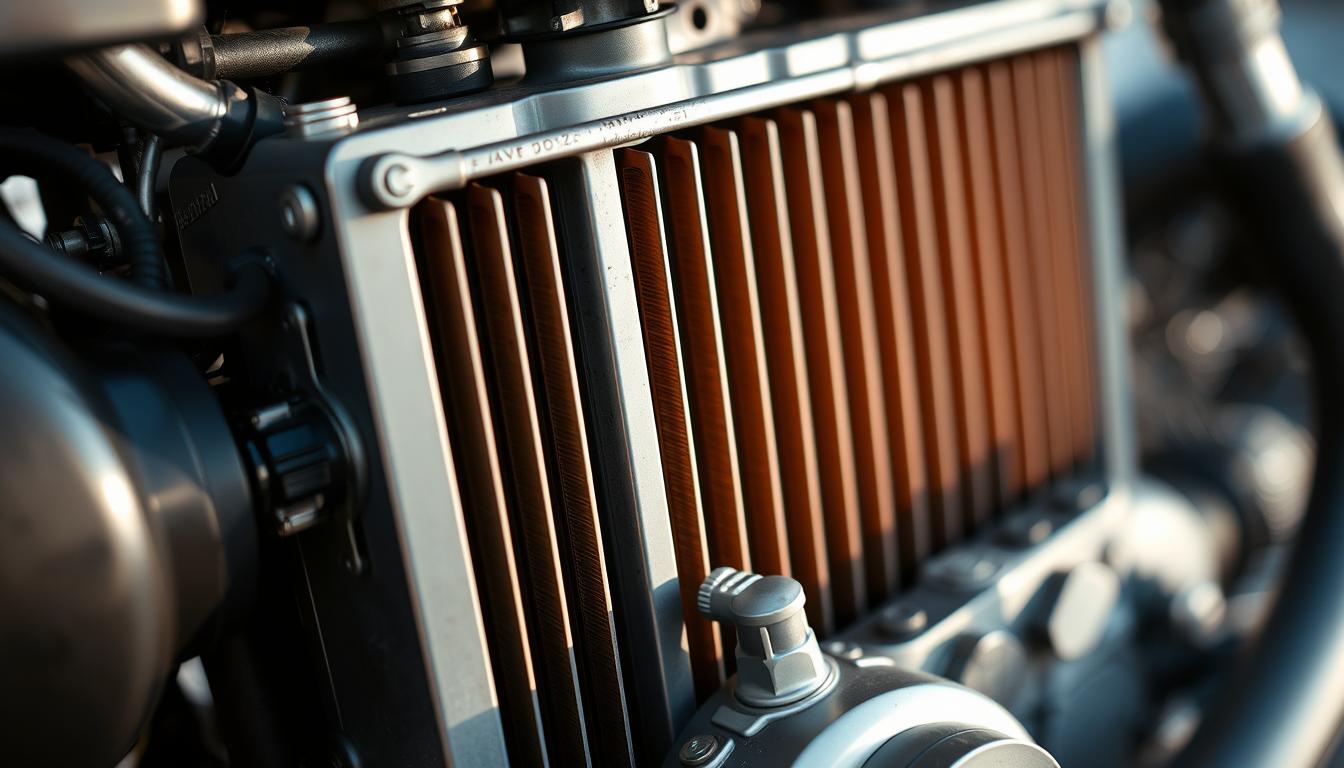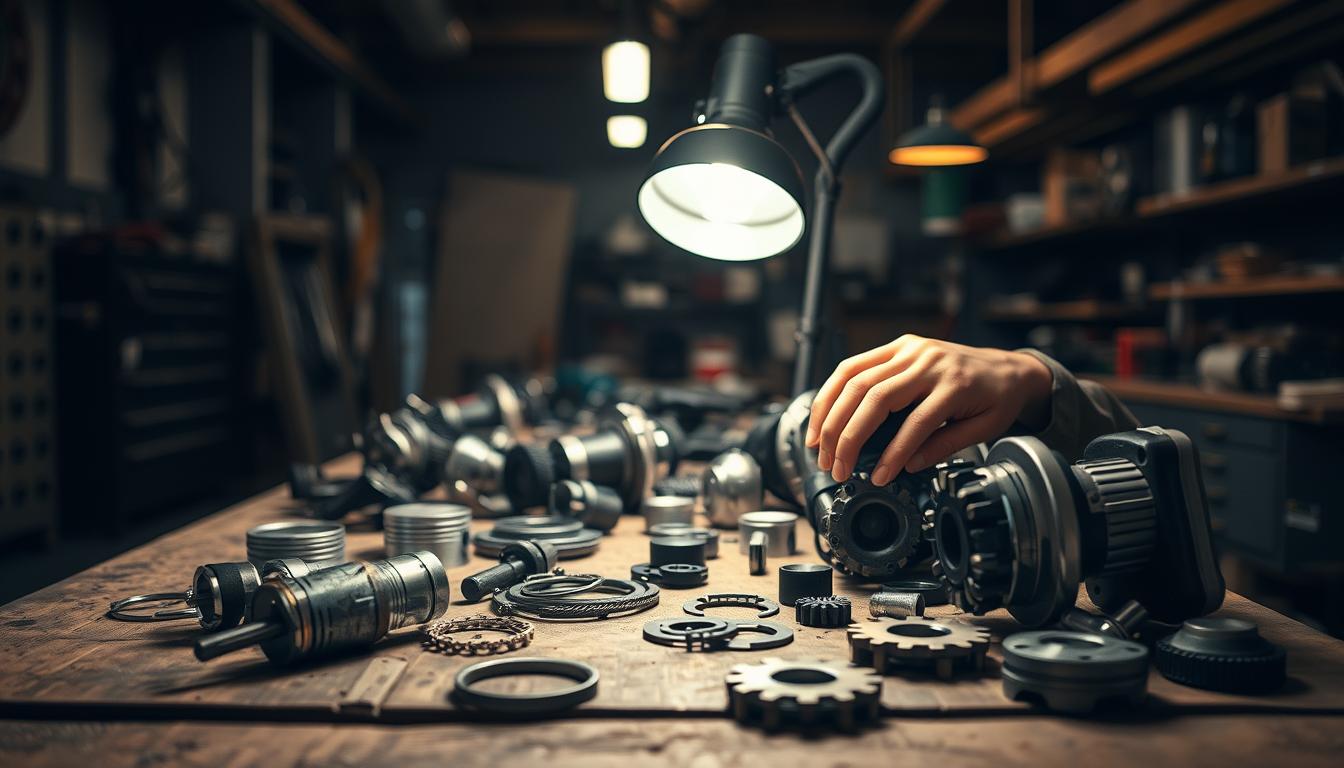Ever wondered why your bike’s engine overheats despite regular maintenance? The answer often lies in the cooling system, a critical component that keeps your ride running smoothly. Whether you’re hitting the trails on a dirt bike or cruising on a road bike, understanding how to assess its radiator and related parts can save you from costly repairs.
This guide is tailored for Australian riders, offering practical tips to inspect and maintain your bike’s cooling system. From checking hose connections to ensuring the fan operates efficiently, we’ll cover everything you need to know. Recognising quality parts like genuine filler necks and high-efficiency pipes can make all the difference in your bike’s performance.
With insights from trusted sources like Northern Suburbs Radiators, this article will help you ensure your bike stays cool, even in Australia’s scorching heat. Let’s dive into the ultimate guide to keeping your ride in top shape.
Key Takeaways
- Understand the role of the cooling system in preventing engine overheating.
- Learn how to inspect radiators and related parts for optimal performance.
- Discover the importance of quality components like genuine filler necks.
- Get practical tips tailored for Australian riders and climate conditions.
- Ensure your bike’s cooling system is efficient and reliable.
Understanding Motorcycle Cooling Systems
Keeping your bike’s engine at the right temperature is crucial for smooth rides and long-lasting performance. A well-functioning cooling system ensures your engine doesn’t overheat, even in Australia’s scorching heat. Let’s break down how these systems work and the key parts that keep your ride cool.
How Cooling Systems Work in Motorbikes
Cooling systems in bikes rely on a cycle of coolant to maintain engine temperature. The coolant absorbs heat from the engine and transfers it to the radiator, where it’s cooled before returning to the engine. This process prevents overheating and ensures optimal performance.
Modern bikes often use liquid cooling, which is more efficient than air cooling. The coolant, a mix of water and antifreeze, circulates through hoses and pipes, absorbing heat and dissipating it through the radiator. This system is especially effective for high-performance bikes and those used in hot climates.
Key Components and Their Roles
Several parts work together to keep your bike’s engine cool. Here’s a breakdown of their roles:
- Radiator: Dissipates heat from the coolant using fins and airflow.
- Fan: Ensures airflow through the radiator, especially at low speeds.
- Hoses: Transport coolant between the engine and radiator.
- Coolant: Absorbs and transfers heat, preventing engine damage.
Hand-built alloy radiators, like those from Northern Suburbs Radiators, offer enhanced efficiency. Their larger core design improves heat dissipation, making them ideal for high-performance bikes.
| Component | Role |
|---|---|
| Radiator | Dissipates heat from coolant |
| Fan | Ensures airflow through radiator |
| Hoses | Transports coolant |
| Coolant | Absorbs and transfers heat |
Quality parts, like genuine filler necks and high-efficiency pipes, are essential for a reliable cooling system. These components ensure a proper fit and prevent leaks, which can lead to overheating and costly repairs.
By understanding how these parts work together, you can ensure your bike stays cool and performs at its best, even on the toughest trails.
Inspection Tips for Used Motorcycle Radiators and Cooling Systems
Before buying a bike, it’s essential to inspect its cooling system thoroughly. A faulty system can lead to engine overheating, costly repairs, and reduced performance. By following these tips, you can ensure the bike’s cooling components are in good condition.
Pre-Purchase Visual and Functional Checks
Start with a visual inspection of the radiator. Look for signs of corrosion, leaks, or damage to the core. Check the hose connections for cracks or wear, as these can lead to coolant leaks. Ensure the fan operates smoothly, especially at low speeds.
Next, test the coolant flow. A blocked or restricted flow can cause overheating. Inspect the filler neck and alloy pipes for deterioration, as these parts are prone to wear over time. A well-maintained radiator can last over 10 years, but neglect can reduce its lifespan significantly.

Assessing the Impact of Age and Use
Age and usage play a significant role in the condition of cooling components. Older bikes may have worn-out hoses or cracked radiator housings. High-performance bikes, like dirt bikes or quads, often experience more stress on their cooling systems.
Here’s a quick guide to what to look for:
- Corrosion: Check for rust or discoloration on the radiator fins.
- Leaks: Inspect for wet spots or stains around the radiator and hoses.
- Fan Operation: Ensure the fan kicks in when the engine heats up.
- Coolant Quality: Look for clean, properly mixed coolant without contaminants.
| Component | Inspection Point |
|---|---|
| Radiator | Corrosion, leaks, and core damage |
| Hoses | Cracks, wear, and secure connections |
| Fan | Smooth operation and timely activation |
| Coolant | Cleanliness and proper mixture |
By performing these checks, you can avoid future engine problems caused by faulty cooling components. A well-maintained system ensures your bike stays cool, even in Australia’s harsh conditions.
Diagnosing Common Radiator and Cooling Issues
Spotting issues early can save your bike from major engine damage. A faulty cooling system can lead to overheating, reduced performance, and costly repairs. By understanding the signs of common problems, you can take proactive steps to keep your ride in top shape.
Recognising Signs of Leaks and Damage
Leaks are one of the most common issues in cooling systems. Look for fluid residue or wet spots around the radiator and hoses. Discoloration or rust on the radiator fins can also indicate corrosion. If you notice unusual noises or a drop in coolant levels, it’s time to investigate further.
Cracks in hoses or worn-out filler necks can lead to leaks. Inspect these parts for wear and tear, especially in older bikes. High-performance models, like dirt bikes or quads, often experience more stress on their cooling components. Regular checks can help you catch these issues before they escalate.
Understanding Overheating and Coolant Flow Issues
Overheating is often caused by poor coolant flow or malfunctioning fans. If your bike’s engine temperature rises unexpectedly, check the coolant levels and quality. A 50/50 mix of anti-freeze and de-ionised water is recommended for optimal performance.
Blocked or restricted coolant flow can also cause overheating. Inspect the radiator pipes and connections for clogs or damage. A well-maintained system ensures your bike stays cool, even in Australia’s harsh conditions.
- Discoloration: Look for rust or stains on the radiator.
- Fluid Residue: Check for wet spots around hoses and connections.
- Fan Operation: Ensure the fan kicks in when the engine heats up.
- Coolant Quality: Use a clean, properly mixed coolant to prevent issues.
By performing these checks, you can avoid future engine problems caused by faulty cooling components. Regular maintenance ensures your bike stays reliable, whether you’re on the trail or the road.
Maintenance and Upgrades for Enhanced Performance
Maintaining your bike’s cooling system is key to avoiding engine issues and ensuring smooth rides. Regular upkeep not only extends the lifespan of your radiator but also boosts overall performance. Here’s how to keep your cooling system in top shape and when to consider upgrades.
Routine Cleaning and Coolant Flushes
Regular cleaning and coolant flushes are essential for a well-functioning radiator. Dirt and debris can clog the fins, reducing airflow and efficiency. Start by inspecting the cooling system for any visible dirt or corrosion.
Here’s a step-by-step guide:
- Remove debris from the radiator fins using a soft brush or compressed air.
- Flush the system with distilled water to remove old coolant and contaminants.
- Refill with a 50/50 mix of antifreeze and de-ionised water for optimal performance.
Flushing the coolant every 30,000 miles or three years is recommended. This prevents blockages and ensures efficient heat transfer.

When to Consider Upgrading Your Radiator
Upgrading your radiator can significantly improve your bike’s performance. Hand-built alloy radiators, like those from Performance Products, offer enhanced cooling efficiency and a direct-fit design. These upgrades are ideal for high-performance bikes or those used in extreme conditions.
Signs it’s time to upgrade include:
- Frequent overheating despite regular maintenance.
- Visible damage or corrosion on the current radiator.
- Increased engine stress from off-road or high-speed riding.
Hand-built alloy radiators are lighter and more durable. They also provide better heat dissipation, ensuring your engine stays cool even in Australia’s harsh climate.
| Maintenance Task | Benefit |
|---|---|
| Routine Cleaning | Prevents clogs and improves airflow |
| Coolant Flush | Ensures efficient heat transfer |
| Radiator Upgrade | Enhances cooling efficiency and durability |
By following these guidelines, you can maintain peak performance and reliability for your bike. Proper care of your cooling system ensures smooth rides, whether you’re on the road or tackling rugged trails.
Choosing the Right Fit and Quality Parts for Your Motorcycle
Selecting the right parts for your bike ensures it runs smoothly and avoids unexpected breakdowns. Whether you’re replacing a radiator or upgrading your cooling system, the quality and fit of components matter. Genuine parts not only enhance performance but also extend the lifespan of your engine.

Sourcing Genuine Radiator and Cooling Parts Locally
Local sourcing offers several advantages, including faster delivery and expert support. Brands like BLYGO and Northern Suburbs Radiators are trusted for their high-quality, genuine parts. These components are designed to meet the specific demands of Australia’s climate, ensuring durability and reliability.
Here’s why local sourcing is beneficial:
- Compatibility: Genuine parts are engineered to fit your bike perfectly, reducing the risk of leaks or malfunctions.
- Availability: Local stock ensures rapid dispatch, often within 24 hours.
- Expertise: Access to experienced technicians who can guide you in selecting the right components.
For example, aluminium billet filler necks and replacement pipes from BLYGO are rigorously tested for performance. These parts are ideal for high-performance bikes, ensuring optimal cooling even on rugged trails.
| Component | Benefit |
|---|---|
| Aluminium Billet Filler Neck | Enhanced durability and precise fit |
| Replacement Pipes | Improved coolant flow and heat dissipation |
| Hand-Built Radiators | Larger core design for better cooling efficiency |
When choosing replacement parts, consider performance, durability, and ease of installation. Genuine components like those from BLYGO and Northern Suburbs Radiators ensure your bike stays reliable, whether you’re on the road or tackling challenging trails.
Conclusion
Ensuring your bike’s engine stays cool is vital for peak performance and longevity. By understanding the role of the radiator and other components, you can maintain optimal cooling efficiency. Regular inspections, cleaning, and timely upgrades are essential to prevent overheating and costly repairs.
Quality parts, like genuine filler necks and high-efficiency pipes, ensure a perfect fit and reliable performance. Local sourcing from trusted brands like BLYGO offers compatibility and expert support, making it easier to keep your bike in top shape.
For more detailed guidance on maintaining your radiator, check out this essential guide. Regular attention to your bike’s cooling system ensures a smooth and reliable ride, whether you’re on the road or tackling rugged trails.




